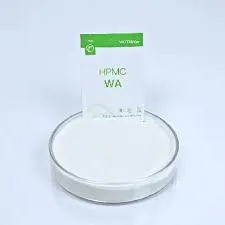
Dec . 07, 2024 03:28 Back to list
grades of hpmc
Understanding Grades of HPMC An Overview
Hydroxypropyl Methylcellulose (HPMC) is a widely used polymer in various industries, particularly in pharmaceuticals, food, and construction. This non-ionic, water-soluble cellulose ether has gained attention due to its versatility, biocompatibility, and ability to form films and gels. One of the crucial aspects of HPMC is its grading, which affects its performance in different applications. This article aims to explore the grades of HPMC, their properties, and their uses.
What is HPMC?
HPMC is derived from cellulose, a natural polymer found in plants. Through a series of chemical reactions, hydroxyl and methoxy groups are introduced to the cellulose chain, imparting unique properties to the resultant polymer. HPMC is characterized by its ability to dissolve in water to form a viscous gel or solution, making it suitable for applications that require a thickening or binding agent.
Grades of HPMC
HPMC is categorized into different grades based on several factors, including its viscosity, degree of substitution, and specific application suitability. The primary grades include
1. Low Viscosity Grades These grades are characterized by their low viscosity and are typically used in applications where rapid dissolution and absorption are required. Common uses include pharmaceutical formulations such as tablets and granules, where a quick release of the active ingredient is crucial.
2. Medium Viscosity Grades Medium viscosity HPMC grades strike a balance between thickness and spreading ability. They are often used in food products as stabilizers and emulsifiers. In pharmaceuticals, these grades are effective as binders in tablets and as coating materials, providing modifications in release profiles.
3. High Viscosity Grades High viscosity HPMC grades are known for their thickening properties. They are extensively used in the construction industry for mortar, adhesives, and tile grouts. The ability to enhance water retention and workability makes these grades indispensable in construction applications. Additionally, they are used in cosmetics and personal care products for their emulsifying and stabilizing attributes.
4. Specialized Grades Beyond standard classifications, there are also specialized grades of HPMC designed for specific applications. For instance, some grades are tailored for controlled-release formulations in pharmaceuticals, while others might be modified for enhanced film-forming properties in coatings.
Factors Affecting HPMC Grading
grades of hpmc

The grading of HPMC is influenced by several factors, including its chemical composition, molecular weight, and the degree of substitution of the hydroxyl and methoxy groups. The degree of substitution plays a significant role in determining the solubility and thickening ability of the polymer. A higher degree of substitution generally leads to improved water solubility.
Viscosity is another critical parameter. It is typically measured using a Brookfield viscometer and expressed in centipoise (cP). The viscosity can vary significantly between different grades of HPMC, and this variation directly influences their application in formulation processes.
Applications of HPMC Grades
The diverse range of HPMC grades allows for a wide variety of applications
- Pharmaceuticals HPMC is frequently used as a binder, coating agent, and matrix former in drug formulations, contributing to controlled release and improved bioavailability of drugs.
- Food Industry In food products, HPMC acts as a thickener and stabilizer, enhancing texture and shelf life. It is particularly useful in gluten-free products, providing necessary binding properties.
- Construction In construction, HPMC improves the workability and adhesion of mortars and adhesives, ensuring better performance in building materials.
- Cosmetics and Personal Care The emollient and emulsifying properties of HPMC make it a valuable ingredient in creams, lotions, and other personal care formulations.
Conclusion
Understanding the various grades of HPMC is essential for optimizing its use across different industries. Each grade offers unique properties that cater to specific application requirements, making HPMC a highly versatile polymer. As research and development continue, the functionality of HPMC is expected to expand, paving the way for innovative products and solutions. Whether in pharmaceuticals, food, cosmetics, or construction, HPMC remains a critical component in enhancing product performance and ensuring consumer satisfaction.
-
Unlocking the Benefits of HPMC Products: A Gateway to Versatile Applications
NewsAug.07,2025
-
Unleashing the Potential of HPMC Ashland: A Comprehensive Look
NewsAug.07,2025
-
Tile Bonding Cellulose: The Key to Superior Adhesion and Durability
NewsAug.07,2025
-
Hydroxypropyl Methylcellulose Powder: The Versatile Component in Modern Pharmaceuticals
NewsAug.07,2025
-
Hydroxyethyl Cellulose: The Versatile Solution for Various Industries
NewsAug.07,2025
-
Hydroxyethyl Cellulose (HEC): The Versatile Polymer for Various Applications
NewsAug.07,2025







